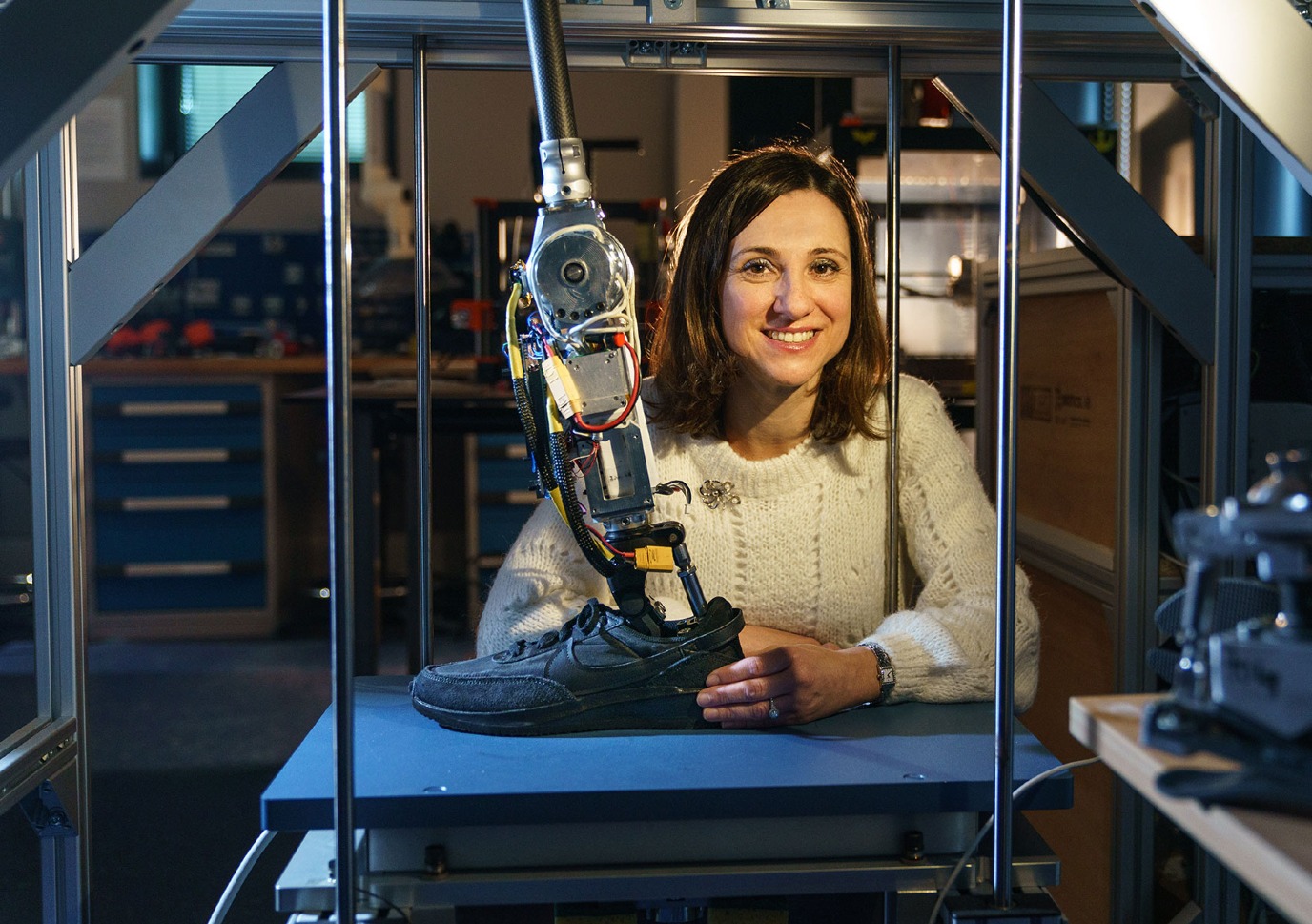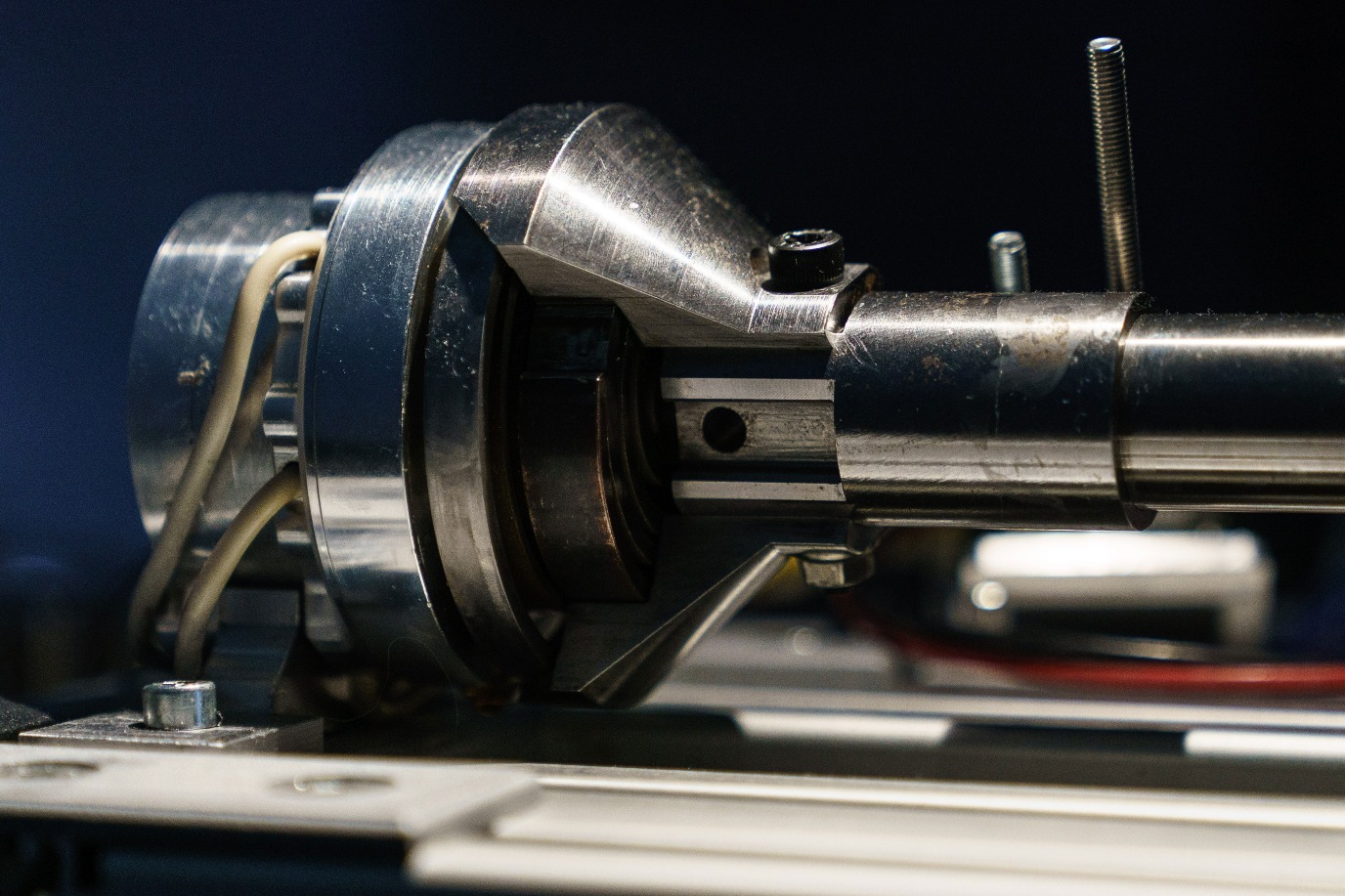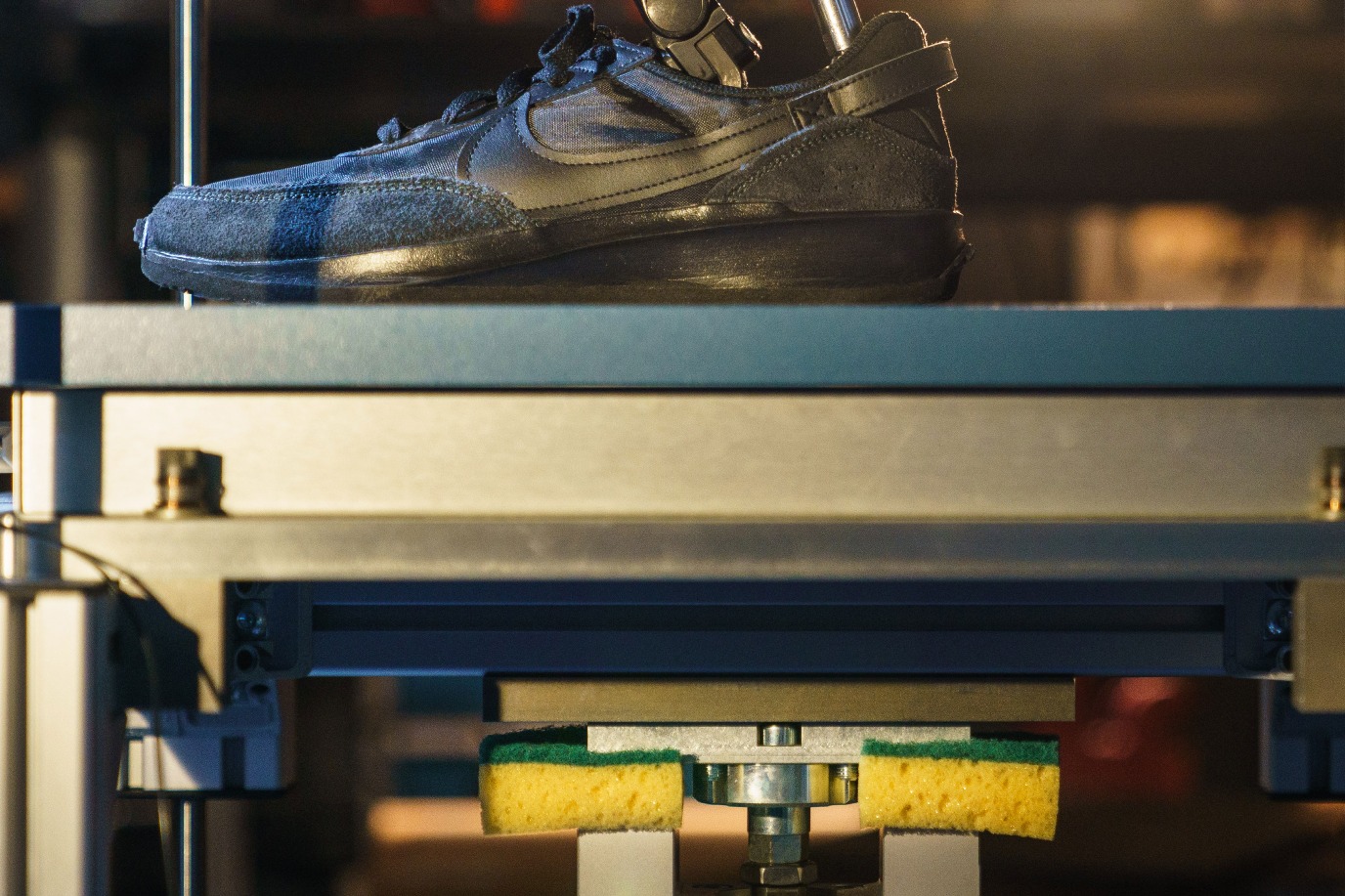Human-centred robotics
‘Imagine a bionic leg that not only helps to walk again but also makes it possible to do so without constantly thinking about it. That would make life a little easier for those who need it’, says Professor of Robotics Raffaella Carloni.
Carloni studies the methodologies and technologies that enable robotic systems to seamlessly interact with humans. In her lab, she shows a video of a recent clinical trial: An individual with an above-the-knee amputation walks more naturally with a novel prototype of a bionic leg and receives full support, even on challenging terrain such as an uphill slope.



Carloni explains: ‘In the design of the bionic leg prototype, we use a biomimicry approach as we intend to replicate the fundamental functionalities of the healthy human leg, in both the mechanics and the control architecture.’ These bio-inspired parts not only improve the mobility of people who have undergone an above-the-knee amputation, but also increase the overall comfort and improve user experience.
During the research, extensive physics-based musculoskeletal modelling of people with an amputation was used to design the mechanical parts that produce movement (the actuators) and to develop the electronic part, the on-board sensors, and the control modules. All of these were combined to create a functional bionic leg that would allow those who need it to move around more naturally.
Carloni concludes: ‘Healthcare innovation in prosthetic technology can only be achieved by taking an approach that actively involves the user in the system design and optimization process. This way, we aim to provide lower-limb amputees with a prosthetic limb that can be used seamlessly and restore a sense of normalcy and independence.’
Text: FSE Science Newsroom | René Fransen
Photos: Reyer Boxem
Every two weeks, UG Makers puts the spotlight on a researcher who has created something tangible, ranging from homemade measuring equipment for academic research to small or larger products that can change our daily lives. That is how UG researchers contribute to the solutions for big scientific and societal challenges.
For decades, engineering teaching and research at the UG has been part of a wide array of strong disciplines, and from a national point of view, our collaboration with the four technical universities is becoming more and more intensive.
Previous portraits of Makers can be found on the overview page .
More information
| Last modified: | 25 February 2025 12.57 p.m. |
More news
-
03 April 2025
IMChip and MimeCure in top 10 of the national Academic Startup Competition
Prof. Tamalika Banerjee’s startup IMChip and Prof. Erik Frijlink and Dr. Luke van der Koog’s startup MimeCure have made it into the top 10 of the national Academic Startup Competition.
-
01 April 2025
NSC’s electoral reform plan may have unwanted consequences
The new voting system, proposed by minister Uitermark, could jeopardize the fundamental principle of proportional representation, says Davide Grossi, Professor of Collective Decision Making and Computation at the University of Groningen
-
01 April 2025
'Diversity leads to better science'
In addition to her biological research on ageing, Hannah Dugdale also studies disparities relating to diversity in science. Thanks to the latter, she is one of the two 2024 laureates of the Athena Award, an NWO prize for successful and inspiring...
